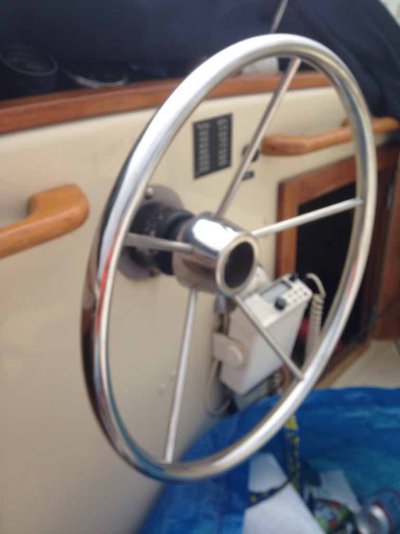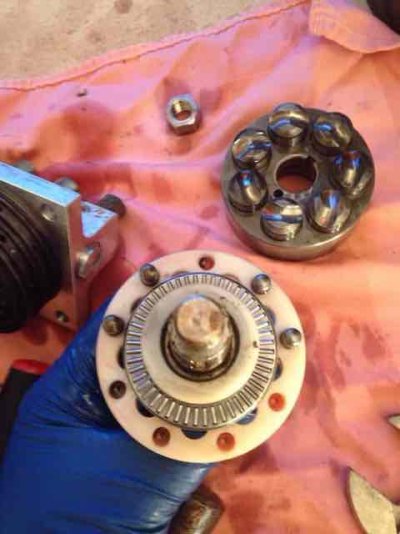cardude01
Guru
- Joined
- Nov 26, 2012
- Messages
- 5,290
- Location
- USA
- Vessel Name
- Bijou
- Vessel Make
- 2008 Island Packet PY/SP
My boat has an Edson steering system. It basically connects the wheel to a chain that pushes and pulls a wire inside a conduit that attaches to a large "wheel" on the rudder. It's basically a sailboat system I think, and it also has a emergency tiller attachment over the rudder but it would be difficult to steer from back in the cockpit without access to the engine and transmission controls.
I don't know much about either type of steering system. What are the pros and cons of a system like mine compared to the hydraulic systems found on most power boats? I like what seems to be simplicity when I look at mine-- no pumps and hoses to fail and leak. Mine has some little fittings where I can push some grease into a little cap to grease the cables.
Why don't more power boats use a direct type steering like this but hydraulic instead?
I don't know much about either type of steering system. What are the pros and cons of a system like mine compared to the hydraulic systems found on most power boats? I like what seems to be simplicity when I look at mine-- no pumps and hoses to fail and leak. Mine has some little fittings where I can push some grease into a little cap to grease the cables.
Why don't more power boats use a direct type steering like this but hydraulic instead?






